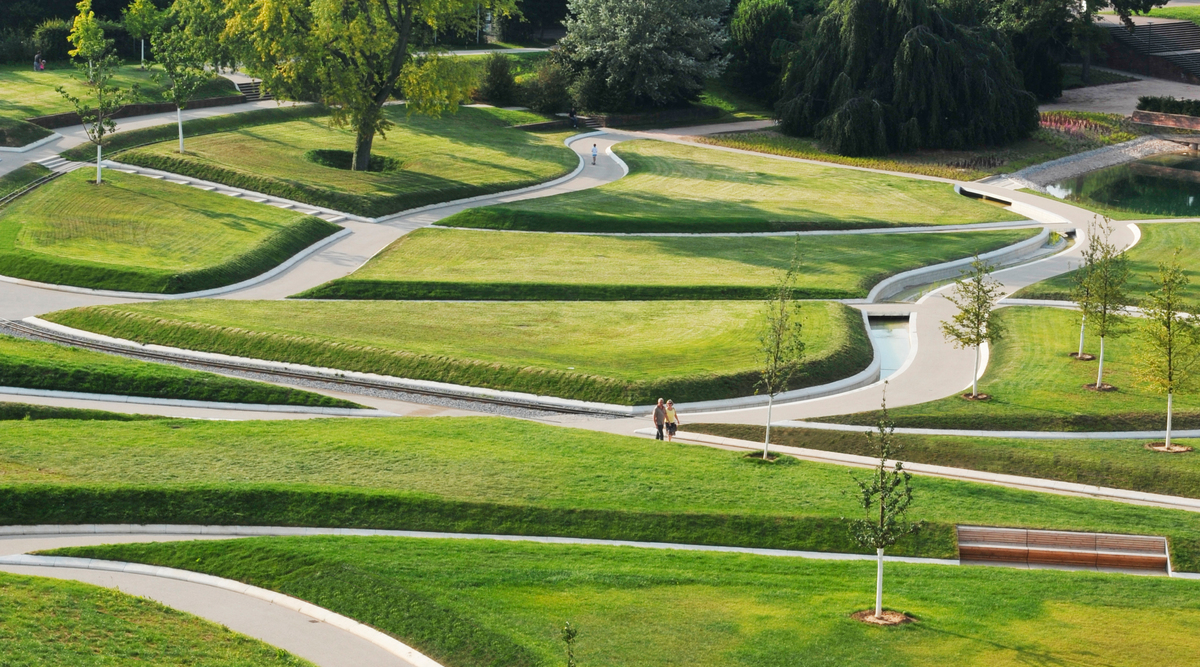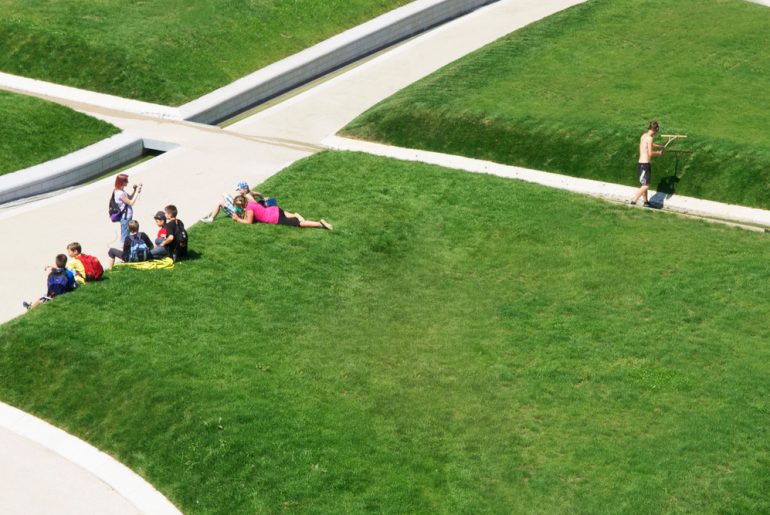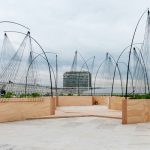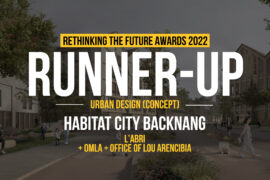The history of Park Killesberg has its origins in the industrial use of the site as a quarry. Known as “Stuttgarter Werkstein” (Stuttgart Ashlar), this sandstone was mined intensively for a long time and left a jagged artificial topography much like an open wound in the landscape. The so called “red wall” of Kochenhof still stands as a symbol of this former use. Though situated in a sloped prime location the land was unsuitable as a building site due to its previous use. Hence, the city of Stuttgart applied for hosting the Reichsgartenschau (National Garden Show) in 1939 with the visionary idea to redevelop and integrate the area and to make it accessible as a green space for the population.
First Award | RTFA 2014 Awards
Category: Landscape Built
Participant Name: Prof. Rainer Schmidt
Country: Germany

Since the 1920s, the planning of the area has been aimed at connecting the various parks and gardens of Killesberg. The extension of Park Killesberg was only made possible after the demolition of the old exhibition grounds.
The design is the result of a collaborative process with the local authorities, citizens and neighbours.

Two themes that characterise Killesberg are the starting point for the design: a soft, near-natural landscape, and man-made quarries as hard topographies. The hard forms of a typical quarry topography change over time, morphing from sharply broken materials into a softer landscape of green regrowth. This process of change has been interpreted at Park Killesberg by bringing vast quantities of soil into the former quarry areas and exhibition grounds, simulating the long natural process of smoothing out irregularities by creating a new topography of lawn ‘cushions’ between path systems. A new landscape arises, and it tells a story.

The underlying theme of the design is based on skewing the perception of human scale and reinterpreting familiar perspectives by raising the topography to eye height and setting up a sunken path network between.. The skilful illusion of the new topography intensifies the feeling of being completely absorbed in the landscape and generates a surprisingly playful experience for the park user – a new sensation. The layout of paths is inspired by the quarries’ irregularities, as well as by the gentle winding pattern taken as one climbs the ascent on either side of the street which bisects the park. The new design motif unifies the Feuerbach Heide and the park in front of the Rote Wand (red wall of Kochenhof) with the new park extension (Grüne Fuge).

The concept of sustainable and ecological development is an underlying theme. Rain water from the roofs of the new development is collected in an underground cistern from where it is piped to a new lake and returned to the water cycle. With their individual microclimatic conditions, the park’s meadow cushions are biotopes for various types of flora and fauna. The meadow grasses require mowing only twice a year, considerably reducing ongoing maintenance costs. The landscape of the Park Killesberg extension interconnects with the adjacent residential area, whose detached houses open directly to the park, as well as forming a direct connection to the centre of the new district.








